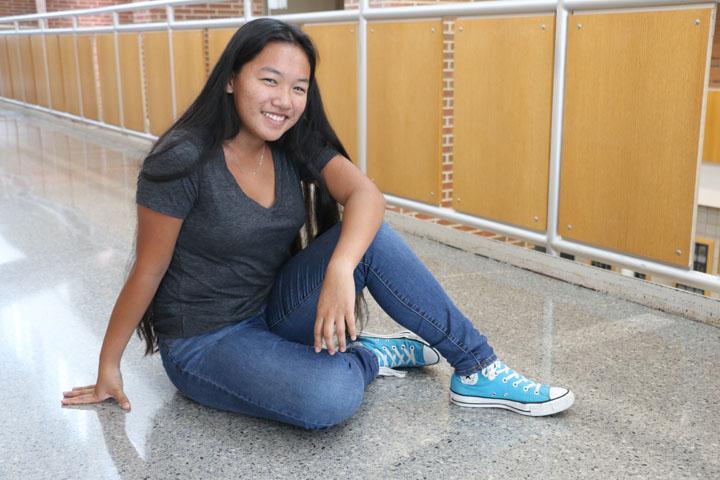Growing up in the suburbs of Boston, I was immersed in the history and culture of the northeast United States at a young age. I remember being in elementary school and learning about Thanksgiving and its origins. Everyone in the class was dressed as either a Pilgrim or a Native American as we discussed the Plymouth Colony, which was just a few miles away, and ate dishes such as cornbread and mashed potatoes.

HISTORY.COM / SOURCE
At the time, Thanksgiving was just a fun time to eat food and draw turkeys. However, as I grew older and became more well-versed in American history, Thanksgiving became increasingly complicated.
Everyone knows the basic story. The Pilgrims traveled across the Atlantic to establish a new life away from religious persecution. Friendly natives helped the struggling Pilgrims with farming. The end result is a giant feast where everyone is happy.
The thing is, that’s not exactly what happened.
The story we all know is slightly skewed, with many details swept under the rug. For starters, the relationship between the Pilgrims and Wampanoag people was not suddenly fixed by one feast. The feast, in some ways, was out of necessity. The Pilgrims, poor harvest after poor harvest, were starving. The natives had entire villages wiped out from previous Europeans through slavery or disease. They needed each other, and through some teamwork, were able to create a three-day feast. These few days were a time of friendship, like we all learned, but it did not last.
In fact, during this time, there was consistent prejudice against the natives. Primary sources from Plymouth show that settlers often viewed the Natives as “savages,” sometimes even as “demons.” The only native they somewhat trusted was Squanto, and that was only because he knew English. Native beliefs were attacked and soon mistrust between the groups developed.
This problem later turned into what we now call King Philip’s War. The once happy alliance fell apart when officials from the Plymouth Colony hanged three Wampanoags. Despite attempts at diplomacy, the two groups could not be reunited. The peace of Thanksgiving was not to last, and the portrayal of Native and European friendship we often see is untrue. The relationship only became more strained as time progressed.
The next Thanksgiving celebration to come up during the colonial times was far different from what took place in Plymouth. This feast was declared by Massachusetts Bay Colony Governor John Winthrop to celebrate the return of heavily armed hunters. This band of hunters had just returned from the Pequot War, a conflict where about 700 Pequots were killed or taken into captivity, many of whom were sold as slaves in the West Indies. The colonists had a feast in celebration of the safe return on these men, and the Natives who were killed were soon forgotten in history.
It’s difficult to acknowledge that these events occurred, but it is necessary. History is often written by the winners, but that does not mean history changes. These events happened regardless of what is taught, and should therefore be acknowledged. Besides, everyone knows the origins of holidays such as Christmas or the Fourth of July; why should Thanksgiving be any different? Knowing the past is often key to helping the future.
I’m not saying to scream about the Pequot massacre to your 90-some-year-old grandma over Thanksgiving turkey. All you really need to do is know the history. Learn the past, accept it and share the knowledge in a helpful way. If we want to continue celebrating on every fourth Thursday of November, we should try to build a better future, and the only way to build a better future is to learn about the past. After all, Thanksgiving is a day to not only be grateful for what we have, but also why we have it.
So enjoy your Thanksgiving dinner, and give thanks that you now know more about the history of Thanksgiving.
The views in this column do not necessarily reflect the views of the HiLite staff. Reach Kalea Miao at kmiao@hilite.org.

































![AI in films like "The Brutalist" is convenient, but shouldn’t take priority [opinion]](https://hilite.org/wp-content/uploads/2025/02/catherine-cover-1200x471.jpg)









































![Review: “The Immortal Soul Salvage Yard:” A criminally underrated poetry collection [MUSE]](https://hilite.org/wp-content/uploads/2025/03/71cju6TvqmL._AC_UF10001000_QL80_.jpg)
![Review: "Dog Man" is Unapologetically Chaotic [MUSE]](https://hilite.org/wp-content/uploads/2025/03/dogman-1200x700.jpg)
![Review: "Ne Zha 2": The WeChat family reunion I didn’t know I needed [MUSE]](https://hilite.org/wp-content/uploads/2025/03/unnamed-4.png)
![Review in Print: Maripaz Villar brings a delightfully unique style to the world of WEBTOON [MUSE]](https://hilite.org/wp-content/uploads/2023/12/maripazcover-1200x960.jpg)
![Review: “The Sword of Kaigen” is a masterpiece [MUSE]](https://hilite.org/wp-content/uploads/2023/11/Screenshot-2023-11-26-201051.png)
![Review: Gateron Oil Kings, great linear switches, okay price [MUSE]](https://hilite.org/wp-content/uploads/2023/11/Screenshot-2023-11-26-200553.png)
![Review: “A Haunting in Venice” is a significant improvement from other Agatha Christie adaptations [MUSE]](https://hilite.org/wp-content/uploads/2023/11/e7ee2938a6d422669771bce6d8088521.jpg)
![Review: A Thanksgiving story from elementary school, still just as interesting [MUSE]](https://hilite.org/wp-content/uploads/2023/11/Screenshot-2023-11-26-195514-987x1200.png)
![Review: "When I Fly Towards You", cute, uplifting youth drama [MUSE]](https://hilite.org/wp-content/uploads/2023/09/When-I-Fly-Towards-You-Chinese-drama.png)
![Postcards from Muse: Hawaii Travel Diary [MUSE]](https://hilite.org/wp-content/uploads/2023/09/My-project-1-1200x1200.jpg)
![Review: "Ladybug & Cat Noir: The Movie," departure from original show [MUSE]](https://hilite.org/wp-content/uploads/2023/09/Ladybug__Cat_Noir_-_The_Movie_poster.jpg)
![Review in Print: "Hidden Love" is the cute, uplifting drama everyone needs [MUSE]](https://hilite.org/wp-content/uploads/2023/09/hiddenlovecover-e1693597208225-1030x1200.png)
![Review in Print: "Heartstopper" is the heartwarming queer romance we all need [MUSE]](https://hilite.org/wp-content/uploads/2023/08/museheartstoppercover-1200x654.png)




